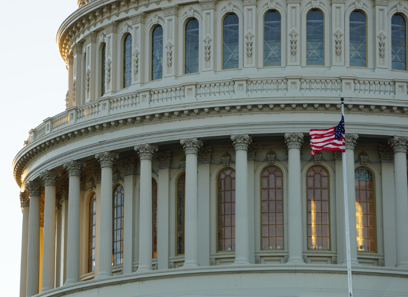M&A Outlook: Economic Factors Driving Major Changes in Mergers and Acquisitions
M&A Outlook: Economic Factors Driving Major Changes in Mergers and Acquisitions
Blog Article
The Effect of Mergers and Acquisitions on Market Characteristics and Competitors
The landscape of procurements and mergings provides a complicated interaction between fostering development and possibly weakening affordable honesty within markets. As business pursue calculated placements to boost effectiveness and innovation, the implications on consumer option and market rates warrant cautious scrutiny. While the advantages of such consolidations can be obvious, the darker effects frequently arise, elevating vital questions regarding market power and the regulative frameworks created to preserve balance. This conversation invites an expedition of the subtleties included, exposing just how these business maneuvers improve the extremely foundations of competitors.
Introduction of Mergers and Acquisitions
Mergers and acquisitions (M&A) play an essential duty in shaping the landscape of modern business, as firms look for to enhance their affordable side and achieve critical objectives. M&A deals include the combination of firms or properties via numerous monetary purchases, including mergers, where two firms incorporate to create a new entity, and procurements, where one firm acquisitions an additional outright. These activities are driven by a myriad of elements, such as the pursuit of harmonies, diversity of product offerings, and the wish to go into new markets.
The M&A procedure generally entails several stages, including calculated preparation, due diligence, arrangement, and assimilation (Emerging Market Opportunities). Firms perform thorough evaluations to identify potential targets that straighten with their development strategies and examine the functional and monetary effects of a deal. Governing factors to consider also play a critical role, as antitrust laws are created to prevent monopolistic techniques that can damage competition
As organizations browse the intricacies of M&A, the outcomes can significantly affect stakeholders, including clients, employees, and investors. Recognizing the dynamics of M&A is crucial for evaluating their ramifications within the broader context of market habits and affordable placing.
Favorable Impacts on Market Dynamics
The consolidation of firms through mergings and procurements can result in significant positive effects on market dynamics. One of the primary advantages is the improvement of functional effectiveness. By incorporating sources, companies can simplify procedures, decrease redundancies, and accomplish economic climates of scale, eventually reducing expenses and enhancing earnings. This efficiency can convert into reduced rates for customers, promoting an extra open market setting.

Additionally, increased market share arising from mergers can supply companies with better negotiating power with distributors and vendors, facilitating enhanced terms that can benefit the overall supply chain.
Adverse Effects for Competition

Furthermore, the removal of competitors through acquisitions can suppress innovation. When key gamers merge, smaller sized companies may struggle to contend, resulting in a homogenization of products and services. The resultant lack of competitors can develop an atmosphere where remaining business have much less motivation to buy research and development.
Additionally, mergings can produce obstacles to entry for new firms, as the merged entity may leverage its enhanced resources to control the marketplace. This can discourage prospective participants, thus restricting competitors and development in the i was reading this long-term.
Inevitably, while mergings and procurements can offer strategic benefits, their potential to undermine competition demands mindful consideration of their more comprehensive effects on the market dynamics. The balance between growth and competitive integrity stays a crucial concern in evaluating such company strategies.
Governing Factors To Consider and Oversight
Regulatory structures play an essential function in forming the landscape of procurements and mergers, making sure that market characteristics continue to be affordable and reasonable. These frameworks are created to stop anti-competitive habits and to secure consumer interests. Regulative bodies, such as the Federal Profession Payment (FTC) in the USA and the European Compensation in the EU, evaluate proposed acquisitions and mergers based on their prospective effect on competition within the marketplace.
The assessment process includes a complete investigation of the marketplace share, possibility for monopolistic methods, and the overall economic ramifications of the deal. Regulatory authorities commonly impose problems or call for divestitures to minimize concerns over minimized competitors, making sure that the merged entity does not control the marketplace unfairly.
Furthermore, transparency is a key element of regulatory oversight. Stakeholder engagement, including public examinations, enables diverse point of views to be considered in the decision-making procedure. This joint strategy helps to cultivate a balanced regulatory atmosphere that promotes innovation while securing competitive practices. Inevitably, effective regulative factors to consider are important in keeping market stability and motivating healthy and balanced competitors in the face of advancing business landscapes.
Case Studies and Real-World Examples
Often, case studies of notable mergings and purchases illustrate the profound results these purchases can carry market dynamics. The 2000 merging in between AOL and Time Warner acts as an archetype, where the anticipated synergies failed, resulting in an extreme decrease in investor value. This situation emphasizes just how social imbalances and overestimation of market capacity can disrupt competitors.
In contrast, the acquisition of WhatsApp by Facebook in 2014 exemplifies a successful combination that improved the interaction landscape. Emerging Market Opportunities. blog here Facebook leveraged WhatsApp's individual base to enhance its solution offerings, properly enhancing its market dominance while preserving competition in the messaging field
An additional considerable case is the merging of Exxon and Mobil in 1999, which created among the globe's largest oil business. This consolidation caused greater performances however raised worries regarding reduced competition in the energy market, prompting regulative analysis.
These examples highlight the complicated interplay between mergers and purchases and market dynamics, showcasing both the prospective advantages and pitfalls that can emerge, inevitably shaping affordable landscapes across markets.
Verdict
Mergers and procurements play an essential role in shaping market characteristics and competitors. Reliable regulative oversight is vital to ensure that More hints the benefits of M&An activities are made best use of while mitigating negative influences on market competitors.
One major problem is the possibility for lowered market competition, as mergers typically lead to the loan consolidation of market power amongst less players. Regulative bodies, such as the Federal Profession Payment (FTC) in the United States and the European Payment in the EU, review recommended mergings and purchases based on their prospective influence on competitors within the market.

Mergers and procurements play a pivotal function in shaping market characteristics and competitors. Reliable governing oversight is vital to ensure that the benefits of M&An activities are made the most of while minimizing unfavorable influences on market competition.
Report this page